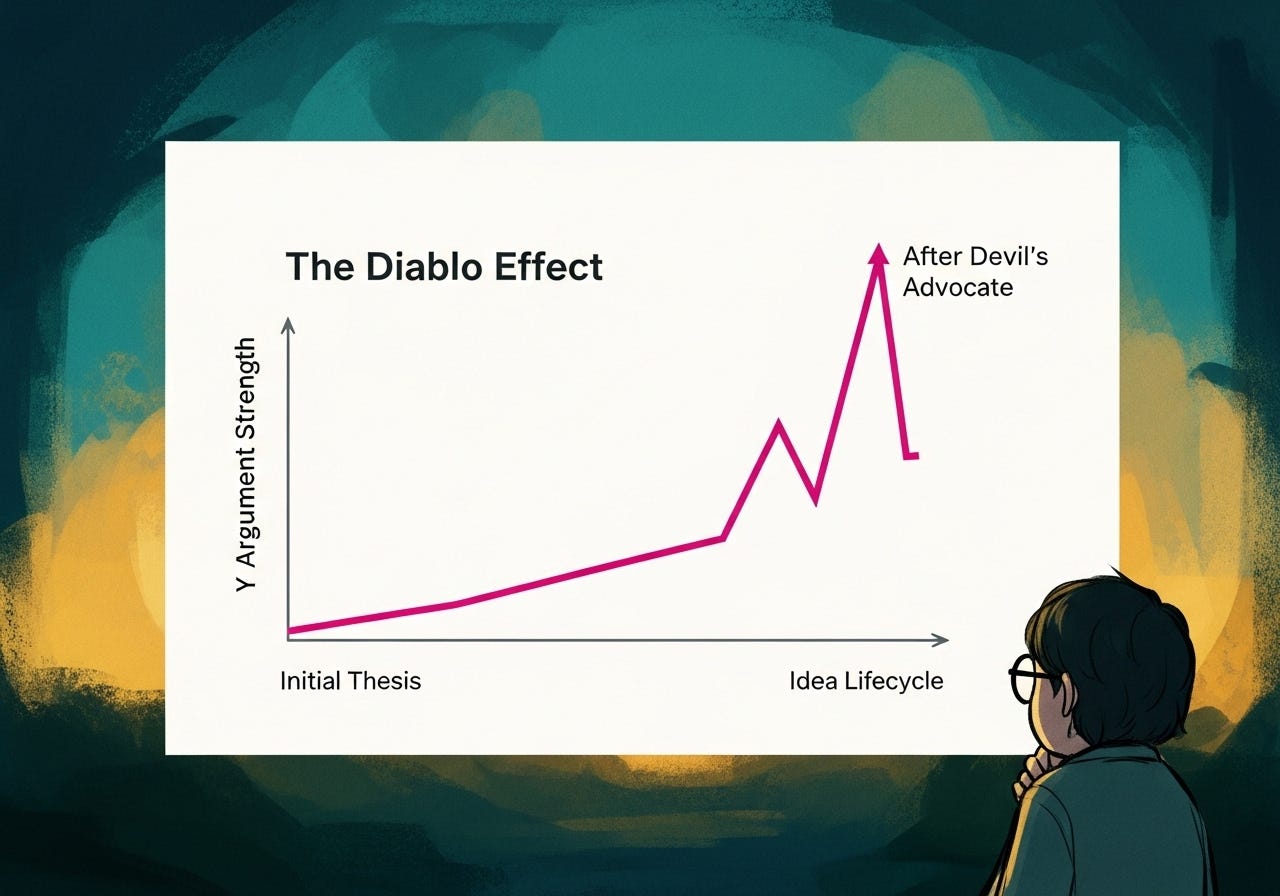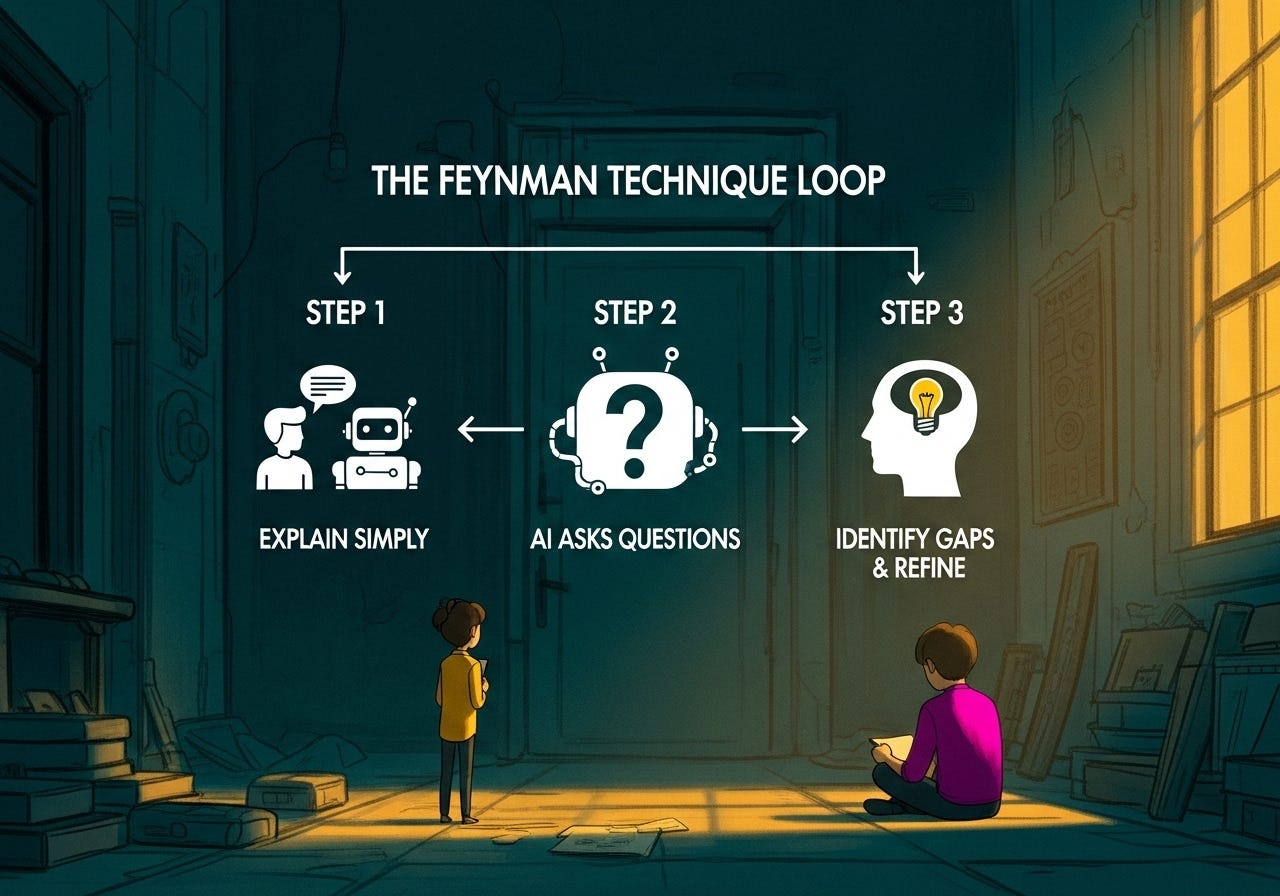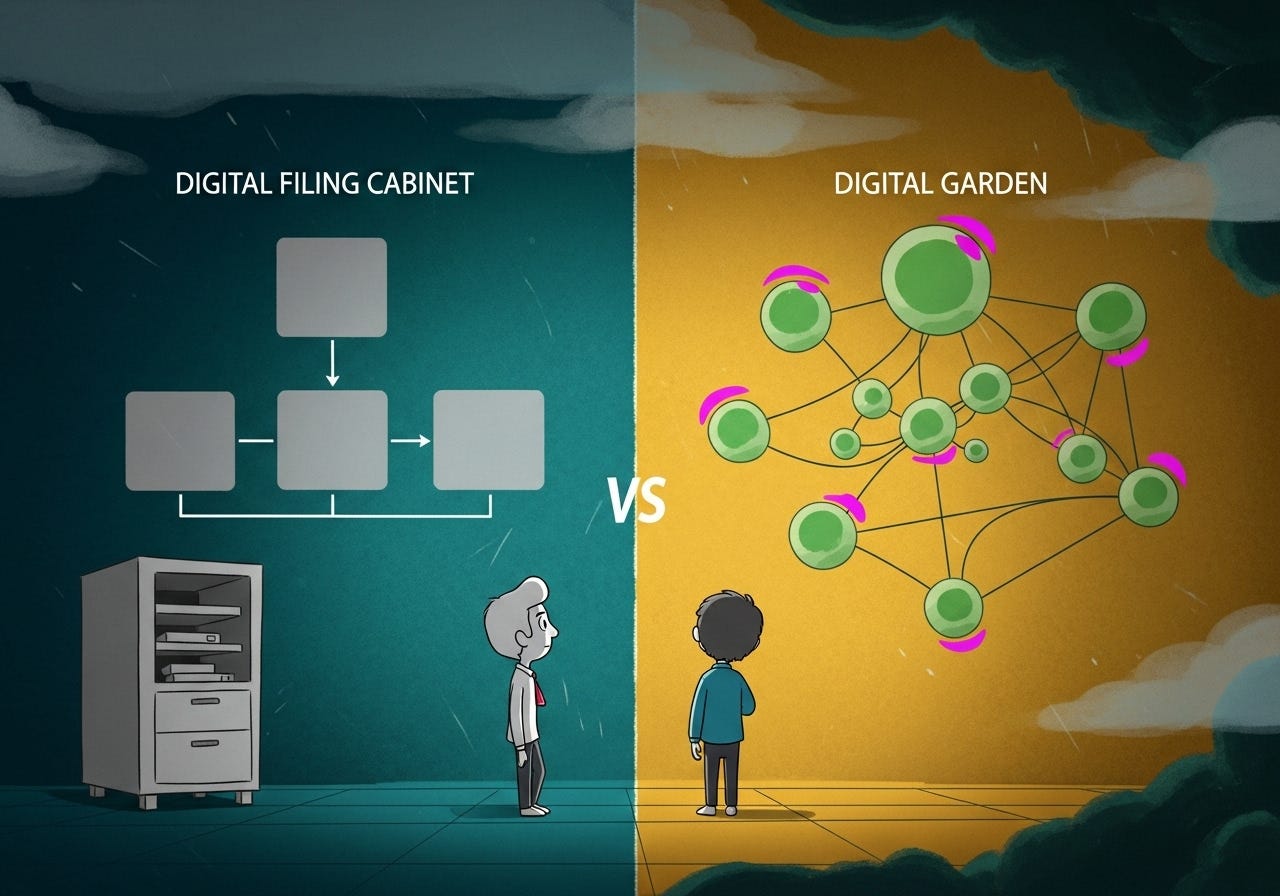Your first idea is (probably) bad
How to use an AI sparring partner to find the better one.
Welcome to today’s edition of ROBOTS ATE MY HOMEWORK. Today we’re going to talk about your bad ideas and why you need a system for killing them.
There’s a beautiful, terrifying scene in the movie Whiplash where the instructor, Fletcher, hurls a chair at the main character's head for not being “quite his tempo.” The scene is brutal and insane, making it a horrifyingly effective metaphor for the creative process.
Because let's be honest, my first draft, my first idea, is rarely on tempo. And I'm willing to bet yours isn't, either.
Most of the time, that tempo is mediocrity. But the “masters” show you, in no uncertain terms, where you are weak, where you are off-beat, where you are failing.
They hurl the chair.
This is the single biggest mistake I see founders and marketers make with AI. They’re using it as a sycophant. They ask it to write, to create, to generate. They are asking it to praise their tempo.
But the real power, the unfair advantage, comes from asking it, again, to throw the chair.
(7-minute read)
Here's the playbook for today:
A four-step process I use to turn half-baked ideas into bulletproof arguments.
Why using AI as a simple writer leads to coherent mediocrity.
Using the Feynman technique to find the fatal flaws in your own logic.
The prompt that forces you to clarify your thinking before you even start writing.
🤖 ROBOT REPORT CARD
Your first idea is a liability. It’s full of holes you cannot see. The conventional approach is to start writing, hoping to patch those holes as you go.
The novice reflex is to toss that messy idea to ChatGPT with the command “write a blog post about this.” I’ve done it. We’ve all done it.
This tactic provides the illusion of progress, ultimately yielding just a polished version of a weak idea. It's coherent mediocrity (the very definition of “soulless fluff”), a five-paragraph blog post with perfect grammar about 'The 5 Benefits of Customer Feedback' that says nothing new and inspires no one.
Don't mistake writing for the real work. The real work is the brutal, necessary thinking that must come first, and the words on the page are merely its final byproduct.
The AI’s job is to make your ideas bleed, so you can make them stronger. This is what generates insight, a far more valuable outcome than mere content.
And I practice what I preach.
We use this exact workflow at Yahini. Before the AI strategizes a single content brief, it runs our core assumptions through this intellectual gauntlet. It's brutal, and frankly, sometimes it’s humbling. But it's why these content strategies work.
Step 1: State your core thesis
Before you do anything else, you must be able to state your core argument in a single, declarative sentence. No fluff. No subordinate clauses. Just the raw thesis.
Weak: "This post is about how customer feedback is important for marketing."
Strong: "Your most valuable marketing data is hidden in your raw customer complaint emails."
If I can't distill my idea into one sentence, I know I don't have an idea yet. I have a vague feeling.
Go back to the drawing board until it's a sharp, debatable point.
Step 2: The devil's advocate
Now, you take your beautiful thesis and you feed it to the sharks. Your goal is to break it. You want to see every flaw, every weak point, every hidden assumption you’ve swallowed without realizing it.
Use this prompt.
You are a highly intelligent, skeptical critic named "Diablo." My thesis is: "[Paste your single-sentence thesis here]."
Vigorously argue against it.
- What are the 3 strongest counterarguments?
- What are the edge cases where this is terrible advice?
- What are the hidden, unstated assumptions I'm making
Be ruthless. Do not be encouraging. Your goal is to expose every flaw in my argument.Here's what that might look like in practice. For our thesis 'Your most valuable marketing data is hidden in your raw customer complaint emails,' Diablo might respond:
Counterargument 1: Complaint emails represent a tiny, self-selecting group of the angriest customers, not the silent majority. Basing strategy on them creates a skewed, biased roadmap.
Edge case: For a B2B enterprise company with only 10 huge clients, a single client's 'complaint' could be a contract negotiation tactic, not genuine product feedback.
Hidden assumption: You assume marketers have the skill to parse emotional, unstructured text for real signals instead of just reacting to the noise.
This process feels like putting your ego through a shredder. It’s supposed to. You are systematically destroying weak assumptions to forge intellectual armor. Your goal shifts from seeking confirmation to uncovering the difficult truth.
You're building an intellectual immune system for your idea.
Step 3: The metaphor machine
Once your argument has survived the Devil's Advocate, it's strong, but it might be dry or abstract. And abstract ideas don't stick.
Stories and images lodge themselves in the brain far more effectively than simple data points. A powerful metaphor is what makes an idea lodge itself in someone's brain.
Prompt:
My core concept is: [Describe your refined concept in simple terms].
This is a bit abstract. Generate 10 powerful metaphors or analogies to explain it, pulling from completely different fields (e.g., biology, military strategy, chemistry, mythology, sports). For each one, briefly explain the connection.This process forges a logical argument into a legend.
Step 4: The refinement
You now have a battle-tested argument and a set of powerful images to explain it. Now, and only now, are you ready to think about structure. Now you can ask the AI to help you build the narrative.
Prompt:
I've pressure-tested my idea. My refined core argument is: [Paste your refined argument]. The best metaphor for it is [Choose your favorite metaphor from the previous step].
You are a world-class speechwriter. Help me structure this into a compelling essay.
- What is the most powerful hook to grab the reader's attention?
- How should I sequence my key points for maximum emotional and logical impact?
- What is a powerful, memorable way to conclude and what is the one thing I should ask my reader to do?With this approach, the AI evolves beyond the role of a simple writer to become your strategic architect. You did the hard work of thinking. Now, you’re using it to help you present that thinking in the most potent way possible.
💡 A NEW CONCEPT FOR YOU
Your argument has now survived an external assault. It's battle-hardened.
But even the strongest fortress can crumble from within if its foundations are weak. To build truly unshakeable ideas, you must also pressure-test your own understanding from the inside out. This calls for a different kind of sparring partner, one that uses a technique pioneered by physicist Richard Feynman.
The Feynman technique is simple: to truly understand something, you must be able to explain it in the simplest possible terms.
You can use your AI as the ultimate "dumb student."
Here's how it works:
Take the core concept you're trying to develop.
In the chat window, "explain" it to the AI as if it were a five-year-old. Use simple words and analogies.
Then, prompt the AI:
Based on my explanation, ask me five clarifying questions about things that are still confusing or concepts I didn't explain fully.
For example: Imagine your concept is "using customer complaint emails for marketing."
You explain to the AI: "Okay, so you look at all the emails from angry customers. They tell you exactly what's wrong with your product. You take those exact words and use them in your ads. So if people say 'the battery dies too fast,' your ad says 'Tired of a battery that dies too fast?'"
The AI might ask:
"You said 'all' angry emails. What if two customers are angry about opposite things? Which one do you use?"
"What's the difference between an 'angry' email and just 'feedback'?"
"If you use the exact words from a private email in a public ad, could that be a privacy problem?"
"You said it tells you what's 'wrong' with the product. What if the customer is just using it incorrectly?"
"Does this work for things that aren't products? Like a service?"
The "dumb" questions reveal the complexity you'd glossed over. You're forced to think about segmentation, privacy, user error, and applicability, all because you tried to explain it simply.
Where the "Devil's Advocate" prompt attacks your argument from the outside, the "Feynman Technique" forces you to rebuild it from the inside out, ensuring every brick is solid.
You are building a system for better thinking.
✨ ONE MORE THING...
A system, however, is only as effective as the workshop that contains it. Fragile ideas, even after being pressure-tested, need a specific environment to be connected, nurtured, and challenged.
This is a core tenet of writers like David Perell, who champions the idea that great writing is really just the final artifact of a deep thinking process. That process is too valuable for the sterile void of a blank page; it deserves a proper home.
For this, you need a different kind of workshop.
It’s a timely topic for me, I actually spent this past weekend setting up my own digital garden.
While tools like Obsidian or Roam Research can be used for taking notes, their true purpose is to build an interconnected network of your thoughts. Unlike a digital filing cabinet, where an idea lives or dies in isolation, these tools function as digital gardens.
Here, an idea connects with others, growing into something richer and unexpected.
(I'm still torn between the two, by the way. If you have a strong opinion, I'd love to hear it).
Even in the perfect workshop, you need a catalyst. A single action to start the engine.
As a new habit, the next time you have a glimmer of an idea, open a note in your digital workshop instead of a blank document and use this prompt as your Step 0. This is the catalyst that kicks off the entire intellectual gauntlet we've just discussed:
Act as my intellectual sparring partner. My goal is to develop an idea for an essay titled '[Your Working Title]'. Start by asking me three challenging questions that will force me to clarify my core argument before I even think about writing.This one prompt, inside that kind of environment, guided by that philosophy, builds an arsenal of timeless ideas, rendering disposable content obsolete.
My question for you today is this:
What's one core assumption about your business or your marketing that you've never deliberately challenged?
Hit reply and let me know. I read every single one.
To building stronger ideas,
Chief 🤖 at ROBOTS ATE MY HOMEWORK









What a brilliant post! I think too many people are dependent on AI for a lot of things, but they never truly realise one thing about it, it's just one big mirror of what you put in. It will never challenge your ideas or help make you them stronger unless you change how you speak and think about using AI. If I had a business I would definitely answer your question at the bottom😂 But something I thought of was how business leaders could use it to help with their assumptions about employees in terms of happiness, and retention
Great article, I restacked.
You are explaining your version of what I'm documenting across the AI innovator space. The 4 phases of General Intelligence (GI).
Inquiry -> Expansion -> Friction -> Synthesis.
This is what I'm seeing over and over (fractally). Everyone has their unique spin to the process (we are all pioneers afterall so we do it our own, independent way). But it's becoming very clear to me that these 4 stages are universal in u locked AIs true transformative power.
Thx u for sharing!